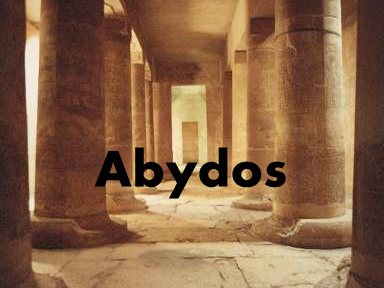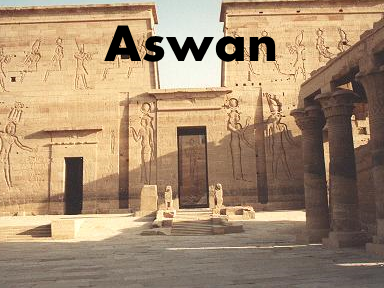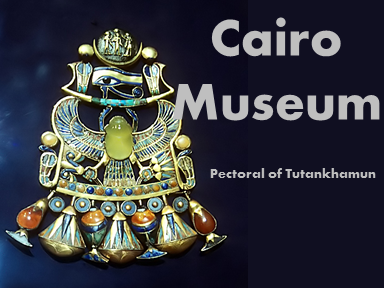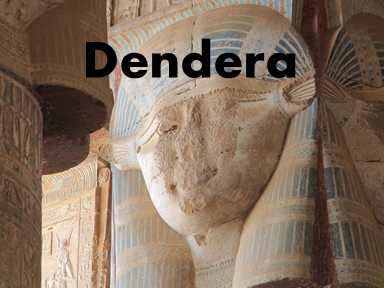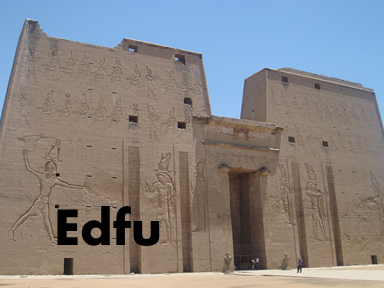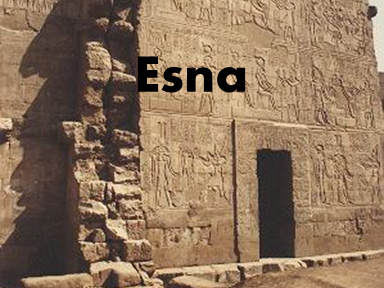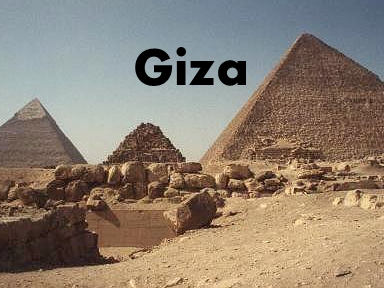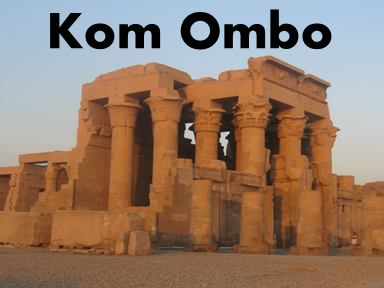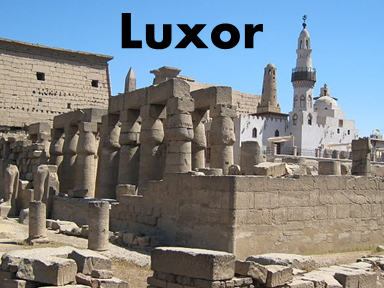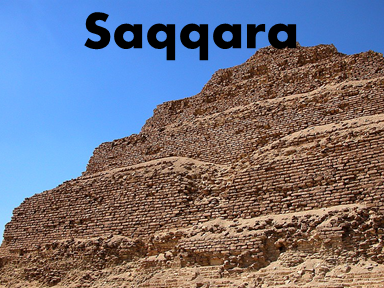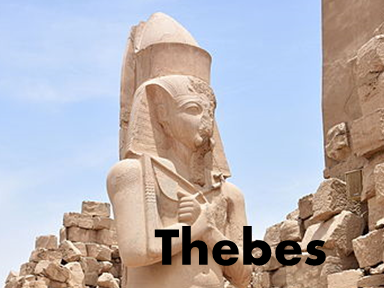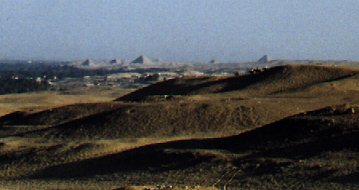
Ancient Egypt Pyramids
Mastaba
Beginning with the First Dynasty, the kings of Egypt were buried beneath a structure called a mastaba. This was a rectangular mud-brick tomb with a flat roof and sloping sides. It looked like a village house. Some of the mastabas were grand. They had rooms above ground and below. The actual burial place of the king was 40 to 80 feet underground at the bottom of a deep, narrow shaft. There was often a carved statue of the king in the mummy chamber. After the king was buried the shaft was filled with broken stones and the entrance was sealed.
The Step Pyramid
By the Third Dynasty the kings expanded on the mastaba idea. King Zoser stacked six mastabas on top of each other. Each one was a little smaller than the one below. This was the first pyramid. It became known as the Step Pyramid at Saqqara. Unlike the mastabas it was built entirely of stone. It was 200 feet tall or about 20 stories high. It had a deep burial chamber like the mastabas. The chamber was only one of a maze of secret rooms. Some of the rooms were lined with blue tiles.
The Bent Pyramid
King Sneferu of the Fourth Dynasty built the bent pyramid. This was the first structured with smooth sides. The slope of the outside walls changed about halfway to the top. Archeologists are unsure why. It could be that building materials were running low or the workers were in a hurry to finish the building. The bent pyramid was over 300 feet high. The outside was coated with a fine white limestone.
The Pyramids at Giza
In the 26th century B. C. three kings ordered the construction of three huge pyramids that would be their tombs. The kings were Khufu, his son Khafre, and his grandson Menkure. The first of these three pyramids is known as the Great Pyramid. It was the largest pyramid ever built. It is so large that it can be seen from the moon.
King Khufu's pyramid, built 4600 years ago, has a base that is about 756 feet long. It stood 756 feet tall when it was built. It is thirty-three stories high. When it was first built it was covered with bright, white limestone. It even had some tips of solid gold. The pyramid was made up of 2,500,000 stones. The blocks weighed an average of 2 1/2 tons each. These blocks were floated down the Nile from quarries hundreds of miles away. King Khufu hired 100,000 men to build the Great Pyramid. They worked three months a year for twenty years. The men that built the pyramids were farmers who could not farm during the months when the Nile River overflowed. They were paid for their work with housing, food, and clothing. Unlike the earlier pyramids the burial chamber in the Great Pyramid is inside the pyramid instead of underground.
Khafre's pyramid is only about 10 feet lower that his father's. Menkure's pyramid is much smaller at only 218 feet tall. Three small pyramids built for Khufu's queens stand near his pyramid. Several temples and rectangular tombs of Khufu's relatives are near these pyramids.
The three pyramids stand next to the Sphinx near the town of Giza.
The Sphinx
The Sphinx is a structure with the head of a human and the body of a lion. It is over 4500 years old. The head of the Sphinx was carved from a solid piece of rock. The paws and legs were made from stone blocks added to the body. The head looked like the Pharaoh Khafre. The Sphinx is 240 feet in length. It is 66 feet tall with the legs. The Sphinx was built to remind the Egyptians that the pharaohs had extraordinary powers. The powers were from both nature and the gods.
Pyramids
Altogether there were about 80 pyramids built for kings of Egypt.
Why build pyramids?
The Egyptians believed that if the pharaoh's body could be mummified after death the pharaoh would live forever. They believed people in the afterlife lived the same as people on earth except without any problems. This is why the pharaoh was buried with food, furniture, and other items needed in regular life. Archaeologists even found models of objects from everyday life formed from clay inside the pyramids. The Egyptians believed that there was magical power to making models. Models of boats, soldiers, cattle, and people were found. A soul house was special kind of model. It was a little home for Ka. They were built with details like stairs and pillars.
Egyptians ordered pyramids built because they feared their remains would be disturbed by grave robbers. Passageways were built at several angles throughout the pyramids and these passageways were later sealed with heavy stones.
The pyramids were connected to other buildings by tunnels. Priests would visit the tomb to pray and leave fresh food for the dead person.
How Pyramids were Built
A path of wooden rollers was made so that sledges carrying the great stone blocks could move more easily. Ramps were built for the sledges to carry the blocks up the sides of the pyramids. As each layer of the pyramid was completed the ramp was made higher and longer. Once the blocks were hauled up the ramp, ropes and levers were used to move the blocks into position. After the blocks were in place a casing of fine-quality limestone was put over the stones.
The workers were housed in barracks. Skilled stonemasons and some laborers worked on the pyramid all year long. Others worked during the flood season when crops could not be raised. Some farmers used this work as a means of paying taxes.
Rock-Cut Tomb
By the time of the New Kingdom, the pharaohs knew that building pyramids was not a good idea. Tomb robbers had stolen the valuables from almost every pyramid in Egypt. Instead of pyramids, these pharaohs built a burial structure known as the rock-cut tomb. These tombs were caverns that were tunneled into natural rock. These tombs contained false doors, tunnels that changed direction, and blocked passages to deceive and confuse thieves. The outside entrances were concealed in rock faces of the cliffs and fortified with sealed, rock-filled entry shafts.
About 60 rock-cut tombs were built in the Valley of the Kings at Thebes. All but that of King Tutankhamen was ransacked in ancient times.
